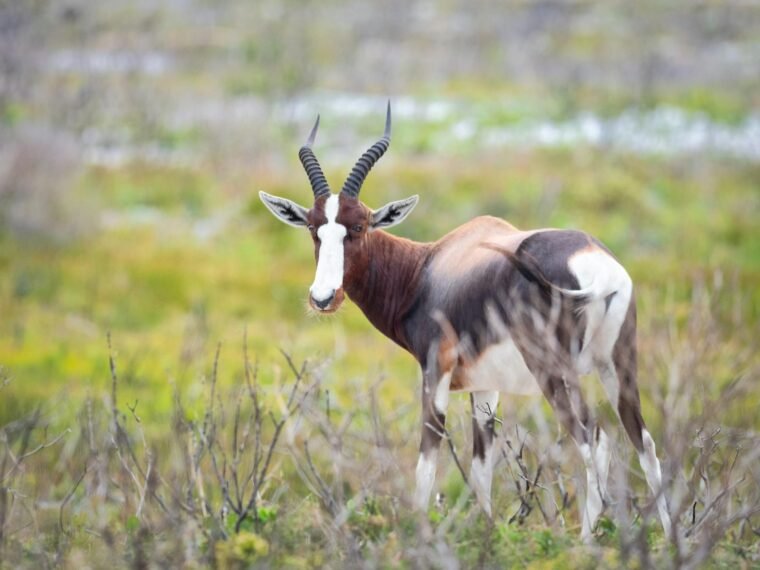Introduction to Afghanistan’s Natural Wonders
Afghanistan, often overlooked due to its tumultuous history, is home to a variety of stunning natural landscapes that reveal the country’s rich ecological diversity. The significance of exploring national parks, natural reserves, and zoos within Afghanistan cannot be overstated, as they serve as essential habitats for numerous species and offer insight into the region’s remarkable biodiversity. From the majestic Hindu Kush mountains to the intricate ecosystems of the surrounding valleys, these natural treasures present a unique opportunity for eco-tourism and environmental appreciation.
The unique flora and fauna endemic to Afghanistan play a vital role in the country’s ecological tapestry. The region boasts a wide variety of plant species, many of which are not found elsewhere in the world. For instance, the extensive alpine meadows and rugged terrains provide habitats for numerous endemic plant species that have adapted to the harsh conditions. Additionally, Afghanistan is home to a range of wildlife, from the elusive snow leopard to various species of birds, which further highlights the importance of conservation efforts within these natural areas.
Engagement with Afghanistan’s ecological heritage not only promotes awareness but also fosters eco-tourism, encouraging visitors to appreciate and protect the environment. Eco-tourism initiatives contribute to local economies and support conservation programs aimed at preserving unique ecosystems. By focusing on responsible travel practices and conservation efforts, visitors can help ensure that these natural wonders are protected for future generations. In the upcoming sections, we will delve deeper into the various national parks, reserves, and zoos in Afghanistan, exploring their unique features and the role they play in both conservation and eco-tourism, setting the foundation for a comprehensive appreciation of Afghanistan’s hidden natural treasures.
List of National Parks and Natural Reserves
Afghanistan boasts a wealth of national parks and natural reserves, each harboring unique ecosystems and a diverse range of flora and fauna. This section highlights some of the most noteworthy parks and reserves, providing vital information for eco-conscious travelers seeking adventure.
Bamyan National Park
Geo-coordinates: 34.75, 67.83
Bamyan National Park is perhaps best known for its stunning landscapes and cultural heritage, including the remnants of the famous Buddhas of Bamyan. This park features rugged mountains, valleys, and lakes, providing a sanctuary for diverse species like the snow leopard and Marco Polo sheep. Tourists can engage with local guides who offer insights into the area’s rich history and landscape. Seasonal activities include trekking and photography during the spring and summer months, while winter attracts adventurers for snow sports.
Panjshir Valley Nature Reserve
Geo-coordinates: 35.1436, 69.1882
Located in the breathtaking Panjshir Valley, this reserve is celebrated for its remarkable biodiversity and natural beauty. Surrounded by towering mountains, the reserve supports a variety of wildlife and plant species. Visitors can explore the scenic hiking trails, with local tour guides offering ecological insights as well as cultural tours. The spring blossoms and autumn colors create vibrant backdrops, making these seasons particularly appealing for nature lovers.
Band-e Amir National Park
Geo-coordinates: 34.71, 67.47
Band-e Amir National Park was Afghanistan’s first national park, famed for its stunning blue lakes and dramatic cliffs. This geological wonder is home to several fish species and unique waterside flora. Tourist routes are well-established, with guides available to lead excursions. Seasonal attractions include camping near the lakes in summer and exploring the vibrant fall foliage, making it a year-round destination.
These parks and reserves reflect Afghanistan’s hidden natural treasures and serve as microcosms of the country’s diverse environment, urging adventurers to explore its beauty in responsible ways.
Zoos and Wildlife Conservation Centers
Afghanistan is home to several zoos and wildlife conservation centers that play a crucial role in protecting the nation’s diverse fauna and promoting education about wildlife conservation.
Kabul Zoo
The Kabul Zoo stands out as the most notable. Established in 1967, the Kabul Zoo is located at approximately 34.5258° N latitude and 69.1738° E longitude. This zoo is not only a recreational space for families but also an important center for conservation efforts, housing a variety of native species, including leopards, wolves, and birds endemic to the region. The zoo has implemented numerous rehabilitation initiatives aimed at restoring the health and welfare of injured and orphaned animals, thereby contributing to the local biodiversity.
Kandahar Zoo
The Kandahar Zoo, located at about 31.6102° N and 65.7100° E. This facility has faced numerous challenges, especially in terms of resource allocation and infrastructure. However, efforts are being made to enhance its capacity to care for wildlife and engage in educational outreach activities. The Kandahar Zoo features species such as Barbary sheep and pheasants, which are essential to Afghanistan’s ecological balance.
Afghan Wildlife Conservation Center (AWCC)
The Afghan Wildlife Conservation Center (AWCC), situated in the central region of the country, is dedicated to preserving the unique wildlife of Afghanistan. With its coordinates at approximately 34.4672° N and 69.2007° E, this center focuses on significant efforts aimed at rehabilitating native species like the Marco Polo sheep and Persian leopard. Additionally, AWCC engages local communities through educational programs that foster awareness about the importance of wildlife preservation. These initiatives promote sustainable practices and responsible tourism, underscoring the vital role that citizens play in these conservation efforts.
As highlighted, these zoos and wildlife conservation centers are integral to Afghanistan’s biodiversity. By enhancing public knowledge about local wildlife and promoting conservation practices, they create opportunities for sustainable tourism while fostering a greater appreciation for Afghanistan’s unique natural treasures.
How to Plan Your Visit: Tour Guides and Travel Tips
Planning a trip to Afghanistan’s national parks, natural reserves, and zoos requires careful attention to detail, particularly in selecting reliable tour guides and understanding safety considerations. Due to the unique conditions in the region, it’s advisable to engage with registered local travel agencies that specialize in Afghanistan. These agencies can help navigate the complexities of travel in this historically rich but often challenging destination.
When selecting a tour guide, look for individuals or companies that have a solid reputation for safety and positive traveler experiences. Reading reviews on reputable travel forums and checking credentials can provide insights into a guide’s reliability. Additionally, knowledgeable guides will not only enhance your visit to national parks and natural reserves but also provide rich context about local wildlife and ecosystems, ensuring a more enriching experience.
Timing your visit is crucial for enjoying Afghanistan’s natural beauty. The best months to explore are typically from March to June and September to November when the weather is mild, and the landscape is lush. It’s important to stay informed about the conditions of the areas you are visiting, as safety protocols may vary with seasonal changes.
Travelers should also be aware of necessary permits for visiting certain protected areas. Check with your tour operator about any relevant regulations. Furthermore, it would be wise to prepare for unforeseen circumstances by organizing accommodations in advance and securing transportation options, preferably through your chosen travel agency.
In conclusion, a well-planned journey will allow you to delve into the breathtaking natural wonders of Afghanistan while ensuring your safety and comfort. By leveraging local expertise, you not only support the community but also contribute to preserving the unique environment of this beautiful country. Embrace the adventure and embark on a quest to discover Afghanistan’s hidden treasures.

